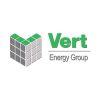Local Law 84 NYC Explained: A Complete Guide for Building Owners

Table of Contents
-
What is Local Law 84 (LL84)?
-
Why is LL84 Important for Building Owners?
-
How to Comply with LL84 in 5 Simple Steps
-
Understanding Your Building’s Energy Grade
-
Penalties for Non-Compliance
-
LL84 vs. LL87 vs. LL97 – What’s the Difference?
-
How Energy Management Software Can Help
-
Final Thoughts on LL84 Compliance
If you own or manage a large building in New York City, you’ve probably heard about Local Law 84, also known as LL84. It’s part of the city’s broader push to cut carbon emissions and improve energy efficiency in buildings.
In this article, we will explain what LL84 is. We will discuss who it applies to and how to comply. We will also cover why it matters. This is important not just to avoid fines, but to make better choices about your building’s energy use.
What is Local Law 84?
Local Law 84 is a regulation that requires certain buildings in New York City to benchmark their energy and water usage every year. It applies to:
-
Individual buildings larger than 50,000 square feet
-
Multiple buildings on a single lot that together exceed 100,000 square feet
The law was introduced in 2009 under the city’s Greener, Greater Buildings Plan—a series of local laws aimed at reducing greenhouse gas emissions and improving building performance citywide.
The idea behind LL84 is simple: you can’t manage what you don’t measure. The city wants building owners to track and report energy use. This will create more transparency and encourage improvements.
Why Does LL84 Matter?
Many people assume this law is just about submitting data, but it goes deeper. LL84 supports several important goals:
1. Lowering energy costs
Benchmarking helps building owners identify inefficiencies. That could mean reducing heating and cooling costs or spotting unusually high electricity use.
2. Reducing carbon emissions
Buildings are responsible for about 70% of NYC’s carbon output. LL84 supports the city’s plan to reduce emissions by 80% by the year 2050.
3. Improving transparency
Tenants and buyers can use this data to compare how energy efficient buildings are. It is like checking a car’s fuel efficiency rating.
How to Comply with LL84 (Step-by-Step)
Complying with Local Law 84 doesn’t have to be complicated. Here’s a breakdown of what’s involved:
 1. Check if your building is covered
1. Check if your building is covered
You can find the list of covered properties on the NYC Department of Buildings website. If your building is on the list, you’re required to comply.
 2. Collect utility data
2. Collect utility data
Gather 12 months of data for electricity, gas, steam, and water usage. You’ll also need details about your building, such as its size, occupancy type, and hours of operation.
 3. Use ENERGY STAR Portfolio Manager
3. Use ENERGY STAR Portfolio Manager
This is a free online tool provided by the U.S. Environmental Protection Agency. You’ll enter your building’s data into the tool to generate an energy performance score.
 4. Submit your benchmarking report
4. Submit your benchmarking report
Each year, the report must be submitted to the city by May 1st. Late submissions can lead to fines, so it’s a good idea to set reminders.
 5. Post your energy efficiency label
5. Post your energy efficiency label
After submitting your report, you’ll receive a grade (A–F) based on your energy score. You’re required to display this grade near the building’s entrance by October 31st each year.
What Does the Energy Efficiency Grade Mean?
The city assigns a grade based on your building’s ENERGY STAR score:
-
A = 85 or above
-
B = 70 to 84
-
C = 55 to 69
-
D = Below 55
-
F = No data submitted
This label helps tenants and the public quickly understand a building’s energy performance. It’s very similar to restaurant health grades—except this one tells you how well your building manages energy.
What Are the Penalties for Not Complying with LL84?
Missing deadlines or failing to submit accurate data can result in fines:
-
$500 per quarter, up to $2,000 per year for not submitting the benchmarking report
-
$1,250 fine for not posting the required energy label by the deadline
The good news is, once your process is set up, it’s fairly easy to stay compliant each year.
LL84, LL87, and LL97 – What’s the Difference?
You might have also heard about Local Law 87 and Local Law 97. Here’s how they compare to LL84:
LL84 is often considered the starting point for improving building performance. It gives owners the data they need to take action—whether that means upgrades, retrofits, or simply adjusting operations.
How Technology Can Make LL84 Easier
Managing compliance manually can be time-consuming, especially for larger portfolios. That’s where building energy management software comes in.
These tools can:
-
Automatically collect and organize utility data
-
Flag missing or inaccurate information
-
Track energy performance over time
-
Provide insights for improving efficiency
To simplify LL84 reporting and meet deadlines, many property managers use tools. Some of these tools include ENERGY STAR Portfolio Manager, Measurabl, EnergyCap, and VertPro SAAS platform.
Final Thoughts
Local Law 84 isn’t just a legal requirement—it’s a way to make buildings smarter, more efficient, and more valuable over time. By tracking your building’s energy use, you gain insight into how it’s really performing and where there’s room for improvement.
If you haven’t started yet, the best time to begin is now. Set up your ENERGY STAR Portfolio Manager, gather your data, and create a system that works for your team.
Need help creating an LL84 checklist, reporting calendar, or energy-saving plan? Just ask—I’d be happy to help.


